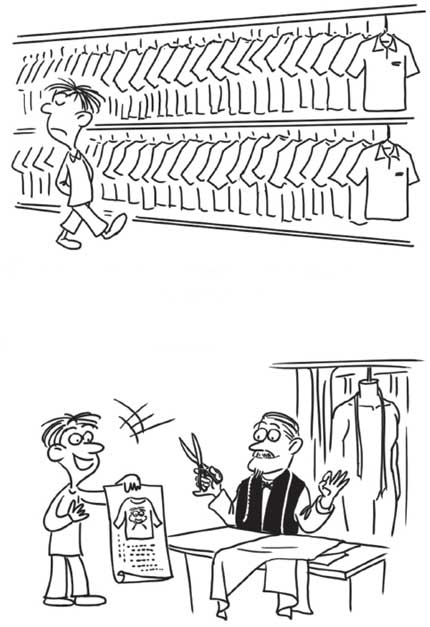The last two decades were the era of hypermarkets - massive superstores that could dazzle customers with an astonishing array of standardized products.

But there are signs that the superstore's age of dominance may be over. In recent months, hypermarkets around the world - Walmart, Tesco, Carrefour - have announced results that fell short of expectations.
Conventional wisdom is that this reflects the economic cycle, but it may be the first sign of a more fundamental shift.
The world's economic history can be seen as a race between transportation and communications. Transportation innovations allow supply chains to carry increasingly large quantities, which thereby encourages standardization. Communications innovations, on the other hand, allow for better specification of design, quality, quantity, and time of delivery, which tends to encourage customization. The dominant economic model of any era emerges from the relative evolution of these two technologies.
In ancient times, transportation technology was poor, and the production of most goods was local. Since consumers and producers could communicate directly with each other, artisan manufacturing was mostly customized. This was the age of the village blacksmith, weaver, potter, and cobbler.
Shipping technology
In the 18th century, shipping technology improved enough to allow the creation of global supply chains. Cotton was one of the first industries to witness this shift. Slaves from Africa were used to grow cotton in the southern United States, which was then shipped to English mills.
The finished cloth was then exported to the rest of the world. The impact of this change on India's artisan weavers and spinners was profound. It is no coincidence that Mahatma Gandhi used the hand-turned spinning wheel as his symbol of protest against colonial rule.
By the early 20th century, transportation technology witnessed major breakthroughs, including railways, the Suez Canal, the Panama Canal, automobiles, and even early airplanes.
Ocean freight rates, for example, fell by 70 percent between 1840 and 1910. But, while improvements in transportation also improved communications - steamships and railways could also carry letters - there were few independent innovations in communications, the main exception being the telegraph.
ood transportation with relatively underdeveloped communications meant that production was centralized at major transportation hubs, and production lines resembling those pioneered by the American automobile manufacturer Henry Ford were used to mass manufacture goods. Vertically integrated industrial structures were needed to minimize communication gaps between various stages of production. As mass manufacturing grew to dominate production, it was no longer possible for individual customers to specify requirements.
Ford famously summarized this shift: "Any customer can have a car painted in any color that he wants," he declared, "so long as it is black." Retailing migrated towards large department stores that could use vast selections of standardized products to substitute for customization.
Telephones and containers
Then, in the 1950s, two further innovations - telephones and containerization - brought another round of change. The telephone had been invented in the previous century, but it was only after World War II that the price of an international call fell to a level that was affordable for common business use. Meanwhile, containerization dramatically improved the speed, reliability, and cost of transporting goods. By the 1970s, the Japanese had combined the two technologies to modularize production and create "just-in-time" supply chains.
The communications revolution of the 1990s made supply chains even more efficient. One outcome was that hypermarkets could leverage scale, logistics, and lean inventories to squeeze prices and provide customers with unprecedented choice. Customer needs were met by providing a wide variety of standardized products - not through customization.
One consequence of the democratization of communications technology is that it is now possible for customers to specify their requirements rather than hope that the available standardized products will suffice.
The online retailer Amazon, for example, changed the bookstore game completely by offering almost infinite choice and large discounts. Nonetheless, first generation e-commerce still felt like a large hypermarket. At that point, it was not yet exploiting the new technology's ability to provide low-cost customization.
Today, near-customization is rapidly becoming the norm. Electronic tablets and mobile devices, for instance, allow us to access increasingly specialized applications. We are entering an era in which it will be commonplace to order a bespoke shirt that will then be made in the cheapest location in the world.
Source:china.org.cn